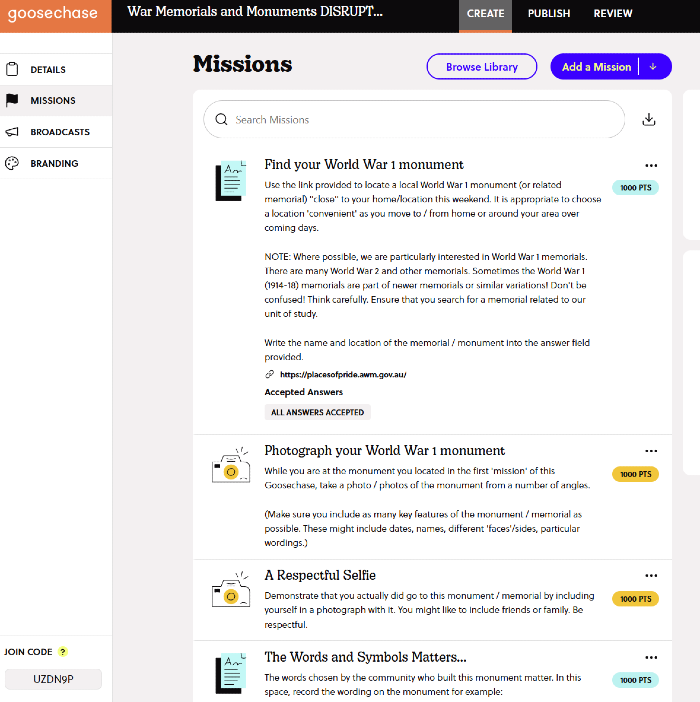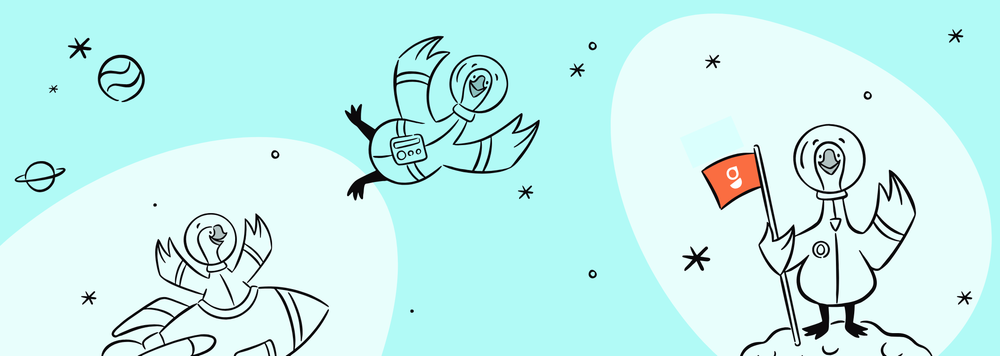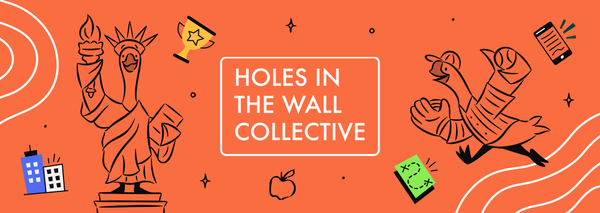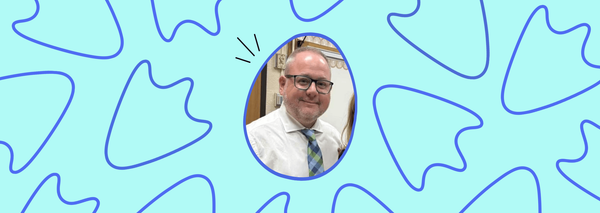More Than a Game: Using the Goosechase Scavenger Hunt to Foster Presence, Connection and Agency in History Education
Read more of Vince's actionable insights on Disrupted History!
In 2019, at the ISTE conference in Philadelphia, I was introduced to a mobile platform called Goosechase. Marketed as an app for gamified learning, it promised student engagement through scavenger hunt-style missions. That kind of language can feel gimmicky, especially for a subject like History, where the goal is often deeper thinking and ethical reflection rather than fast-paced point-scoring.
But, since 2020, I’ve used Goosechase dozens of times with my students, and, with each experience, I’ve found ways to reimagine the app as a tool not of competition, but of connection.
When designed thoughtfully, Goosechase can be a scaffold for presence: a means of situating students in place, in community, and in conversation with real stories, real spaces, and each other.
This term, I’ve run two distinct types of Goosechase experiences – a team-based excursion / field trip experience, and two non-team homework experiences. Each type has shown me just how powerful these asynchronous, flexible, and place-based activities can be when they are intentionally layered into broader historical inquiries.
Excursion Learning: Standing Where Others Have Stood
In Term 2, my Year 9 History class visited the Anzac Legacy Gallery at the Queensland Museum. Before the visit, I recce-ed the exhibition and built a custom Goosechase experience around the objects, narratives, and spaces the students would encounter. This wasn’t just about facts. The scavenger hunt activities within Goosechase (called ‘Missions’) invited students to observe, record, reflect, and engage – with artefacts, with displays, with museum guides and curators, with their teachers, and with each other.
The app allowed students to stand where others had stood – literally. One Mission had them position themselves in relation to Mephisto, the rarest surviving World War I German tank, and reflect on historical photos taken from a similar angle at the same location in proportion to the tank. To stand where those in the past have stood. Other Missions asked them to talk to guides, interpret inscriptions, interactive with displays, and share back visual and textual reflections.
The class was divided into collaborative teams for the experience. Teams were made up of three students each and each included students who didn’t have smartphones of their own. The collaboration was deliberate, thoughtful, and inclusive.
Back in the classroom, we used a PowerPoint constructed from their submissions – a visual and narrative collage of their experience – to connect the excursion experience to their learning. What emerged from the student use of the Goosechase app and from their reflections upon the excursion was remarkable. The PowerPoint, which acted as a post field trip debriefing tool, highlighted a range of the student experiences. Further, students were able to hear (see) their voice amplified beyond the app. Their voice overwhelmingly indicated that the field trip and app was allowing them to ‘do more’ than performatively complete excursion activities. Five of the eight groups shared post-excursion reflections via the app that reached for something deeper:
“…these stories and experiences were lived by real people like us…”
“…war is not just about fighting. It’s the people back at home and the war lingers on after war…”
“a permanent takeaway that I’ll have is ‘every story matters’. Like there were some people who just seemed like regular people, but their stories all mattered…”
“[we] connected to deep, meaningful stories of all people associated with the war.”;
“… we have learnt about how war never really ends…”
These responses moved beyond just responses to a worksheet. They were the result of a reflective process where being present to deeper learning mattered – where the space, the tasks, and the connections helped students get history, not just performatively do it.
History Homework That Leaves the House
While Goosechase works well for excursions, I’ve also been experimenting with its potential to scaffold asynchronous, community-linked homework. This term, I’ve designed two such experiences for Year 9 students.
War Memorials and Monuments: Commemorating in the Community
Launched the day before Anzac Day, the War Memorials and Monuments Goosechase asked students to find their local WWI memorial, photograph it, and reflect on its symbolism. A “respectful selfie” was required – an intentional framing that reinforced how to be present in commemorative spaces. Students read aloud The Ode, observed inscriptions, and answered open-ended prompts about what else the site revealed.
Importantly, they weren’t alone. Many students undertook this task with family members. It sparked conversations – about remembrance, community, and, in many cases, personal or familial links to war.
This activity is an example of what I call asynchronous slow teaching. It’s not rushed, it’s not standardised, and it’s not designed to be “marked” or “assessed” in the traditional sense. It’s scaffolded to deepen students’ experience of place, memory, and civic presence. The task sits within a broader unit that includes flipped classroom content, object-based learning using artefacts from the Queensland Museum’s loan program, engagement with family histories, and the museum excursion discussed previously.
Evidence of Empire: Starting Conversations at Home
The second homework Goosechase, Evidence of the Empire, builds on our current unit related to British imperialism – a unit growing out of the Australian Curriculum v9’s study of Asia and the World (1750–1914). So far, my class has flipped some introductory content, played the board game RISK to explore geopolitical power, reflected upon those experiences using thinking routines from Harvard’s Project Zero, and unpacked visual sources like Gillray’s Plum Pudding in Danger (1805) and Puck’s From the Cape to Cairo (1902). Goosechase extends that inquiry outward.
Within Goosechase, students are tasked with connecting the content of British Empire legacies to their own lives and communities. Missions prompt them to ask family members (or others) about travels to places that were once part of the British Empire – India, Hong Kong, parts of Africa, Singapore. They are encouraged to notice architectural remnants, cultural echoes, or even everyday products that point back to colonial legacies.
Early submissions suggest that this is doing what I hoped it would. Students are talking to parents, grandparents, and family friends — not just Googling answers. There’s evidence that Goosechase is working as a conversation starter, not a trivia quiz. That’s the kind of “doing history” I want to cultivate: relational, expansive, grounded in the present but oriented toward understanding the past. Some Missions within the Goosechase can be leveraged at later points in the course – in ways that are reparative and generative – as students grapple with the legacies of imperialism and the challenges of inclusion and decolonisation.
Designing for Presence, Not Just Points
I’ve deliberately moved Goosechase away from its most obvious use cases: competition. Scores, leaderboards, and rankings might drive short-term engagement, but they are less effective in leading to reflective learning or collaboration.
I try to use the app to foster dialogue, to surface insights, and to situate students in time, space, and community. I try to use the app in ways that encourage students to be more fully present to their learning as people.
Used well, Goosechase lets us build flexible, student-centred learning sequences that are inclusive of different contexts and lives.
It’s about using technology wisely to enhance the human experience. It’s not about technology for its own sake. It’s about using technology as a tool within a broader transformative and reparative pedagogy that helps students see themselves as actors and agents within their world, as active contributors to a collaborative process of making meaning.
If you’ve like to engage with a demo version of this Experience, you can do so via the Goosechase app using the Join Code: UZDN9P

Thank you so much to Vince for being a champion in Goosechase community, and allowing us to share his thoughts. Connect with him and check out his blog, Disrupted History, for more actionable insights for educators!
What is Goosechase?
At Goosechase, experience is everything. Originally inspired by scavenger hunts, Goosechase is an online platform that enables organizations and schools to engage, activate, and educate their communities through delightful interactive experiences. Sign up and try creating a free recreational Experience, or check out our Pricing!





